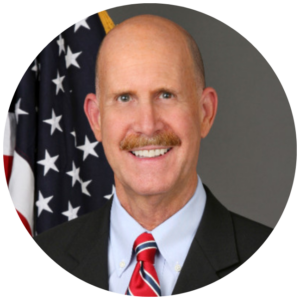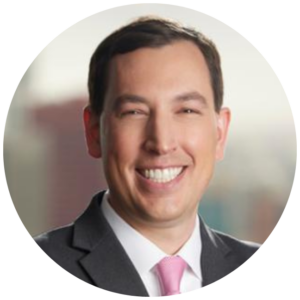Locums CME is a bi-weekly roundup of recent news that matters to locum tenens providers. Stay in the loop on what’s new in the locums industry, and make the most of the locum tenens lifestyle with our fresh finds.
Exploring Gig Work: Physicians Find Diversity, Balance, and Enrichment Beyond Their Traditional Practice
Nov. 14, 2023
In today’s dynamic healthcare landscape, we’ve seen many physicians explore the world of gig work beyond their primary practice. The common gig work types include locum tenens, moonlighting, or telehealth, and docs often pursue gig work for factors like adding supplemental income, professional enrichment, better work-life balance, or the opportunity to diversify their skills.
Some of the key differences between the gig work opportunities:
- Locum tenens involves filling in for colleagues at different locations.
- Medical moonlighting differs in that it entails picking up extra shifts within the same institution.
- Telehealth, on the other hand, allows remote patient consultations via phone or computer.
Some of Gig Work’s Main Benefits
One of the key motivators for a doctor pursuing gig work is the potential for supplemental income. The supplemental income helps aid in financial relief from medical school debts or bolstering retirement savings. A recent CHG Healthcare survey highlighted this as the primary reason for starting locum tenens work among active physicians in that field.
Professional enrichment is another significant reason physicians engage in gig work. Roles like locum tenens expose them to various cases, and that helps them sharpen their clinical skills while keeping doctors abreast of medical advancements.
Gig work also helps doctors maintain a healthier work-life balance. Gig work offers flexibility and autonomy, and it helps workers manage the demanding nature of healthcare. Job flexibility is instrumental in reducing burnout, which is a common issue among physicians due to long work hours and high-stress environments, and is a key factor pushing physicians out the door toward other career opportunities. Additionally, gig work serves as a means to address healthcare disparities, especially in underserved areas, allowing physicians to contribute meaningfully to society.
Growing your professional network is a benefit that comes naturally when working locum tenens. Physicians can interact with peers from diverse backgrounds, and those opportunities can lead to potential collaborations and new jobs. When embarking on gig work, physicians are advised to maintain continuity of care in their primary practice, manage logistics efficiently, and understand the worth of their time to maximize income and patient care.
Physician gig work offers a multifaceted approach to growing their income while helping contribute positively to their well-being. Locumstory does a great job explaining how to navigate the gig economy for providers. Read more in the full article here.
Your Locums Prescription
Launching a Career in Locum Tenens: A Guide for Aspiring Independent Contractors
Nov. 14, 2023
CompHealth has started a five-part series on locum tenens and a guide for physicians wanting to become independent contractors. In the first part of its series, CompHealth explores the fundamentals of locum tenens and how to get started.
- What is locum tenens? So, for those unfamiliar, locum tenens is a Latin term meaning “holding the place,” which involves healthcare providers, e.g., physicians, physician assistants, and nurse practitioners, who temporarily step into positions or provide additional medical care for a facility when needed. These assignments can vary in duration from a single shift to several months.
- What do locums do? Locum tenens physicians, across various medical specialties, deliver patient care like they did in their previous roles but typically without the administrative obligations that come with staff positions.
- Why work locums? Physicians choose locum tenens for various reasons, such as supplementing income, exploring different types of work, transitioning into retirement, or achieving a more flexible schedule.
- Who benefits from locum tenens? The benefits extend beyond physicians, as locum tenens help provide care to underserved areas and ensure uninterrupted medical facility coverage.
- How to get started? Physicians, nurse practitioners, or physician assistants can connect with recruiters at staffing agencies, who will match assignments to their preferences and guide them through the application process.
Additionally, CompHealth mentions other options for physician independent contractors, including moonlighting (taking secondary jobs), per diem work (flexible agreements with hospitals), and various nonclinical roles. Part two of this series should delve deeper into working with a locum tenens agency.
For more, read the full article in the series. Also, see our comprehensive No-BS Guide to Locum Tenens for an in-depth explanation of everything a locums provider needs to know.
How the Growing Role NPs Play in Healthcare Helps Improve Delivery
Nov. 13, 2023
Last week’s Nurse Practitioner (NP) Week carried the theme “Recognizing Heroes in Health Care,” which acknowledges our NPs’ contributions to the healthcare industry.
NPs have a comprehensive knowledge of medicine, offering their own personal touch. NPs provide high-quality care and are crucial contributors in the healthcare field. NPs are the provider of choice for millions of Americans, including citizens in rural communities where access to a physician may be limited.
In recognition of the celebration and NPs’ contribution to medicine, AMN Healthcare wrote an article highlighting seven ways NPs are making the healthcare industry better:
- Did you know there are over 355,000 licensed NPs in the US? Each one of these providers plays a pivotal role in addressing the country’s looming physician shortage.
- NPs see an average of three or more patients per hour and prescribe medicine to patients, averaging 21 daily prescriptions.
- NPs are at the forefront of the population management and team-based care model.
- NPs play a growing role in healthcare delivery because of the increased scope of practice regulations and costs and their proven ability to increase patient access.
- Their holistic approach emphasizes the whole person’s well-being, assisting patients in making informed healthcare decisions and adopting healthy lifestyles.
- 45.6% of full-time NPs hold hospital privileges, and 10.9% have long-term care privileges.
- NPs contribute to primary care and specialty medicine, complementing physician practices.
This weeklong recognition highlights the growing importance of NPs in healthcare delivery, driven by the expanding scope of practice regulations and cost-effectiveness. See the full article from AMN Healthcare here.
Physician Wellness Retreat
NIOSH Launches ‘Impact Wellbeing’ to Combat Healthcare Professional Burnout
Nov. 13, 2023
The National Institute for Occupational Safety and Health (NIOSH) has initiated a federal campaign, “Impact Wellbeing,” to address burnout in healthcare professionals. The Impact Wellbeing campaign focuses on empowering facility leaders with immediate solutions to improve the mental health of their workforce.
 Dr. John Howard, NIOSH’s director, emphasized the need to engage healthcare workers to understand their concerns and areas requiring improvement. The group surveys health workers to understand their concerns better and learn which areas need improvement.
Dr. John Howard, NIOSH’s director, emphasized the need to engage healthcare workers to understand their concerns and areas requiring improvement. The group surveys health workers to understand their concerns better and learn which areas need improvement.
The Dr. Lorna Breen Heroes’ Foundation is also involved, advocating for mental health support for healthcare workers without fear of consequences and addressing concerns about professional repercussions. Health workers have long been concerned about the professional consequences of being diagnosed or treated for mental illnesses, often exacerbating burnout in the profession.
Additionally, efforts are underway to reduce administrative burdens on healthcare workers and involve them in decision-making processes to enhance patient and worker well-being. Read more in the full article from Politico.
Embracing EHR Change: Navigating the Transition to New Systems
Nov. 13, 2023
 Changing to a new electronic health record (EHR) system can be stressful. But before letting it make you angry or upset, focus on the “why” behind the change. Dr. Jennifer Shaer, a pediatrician and chief wellness officer at Allied Physicians Group, wrote about the transition to a new EHR in an article from KevinMD. Shaer says the change was likely prompted by the obsolescence of the old system, and it’s crucial to remember that a new and better EHR enables doctors to continue practicing and caring for patients.
Changing to a new electronic health record (EHR) system can be stressful. But before letting it make you angry or upset, focus on the “why” behind the change. Dr. Jennifer Shaer, a pediatrician and chief wellness officer at Allied Physicians Group, wrote about the transition to a new EHR in an article from KevinMD. Shaer says the change was likely prompted by the obsolescence of the old system, and it’s crucial to remember that a new and better EHR enables doctors to continue practicing and caring for patients.
Accepting the natural negative emotions that come with change is essential. Learning new technology requires concentration, patience, and acknowledging and processing these emotions without dwelling on them. Healthcare providers need to proactively prepare for obstacles and resistance to successfully manage this transition. Learn about the new system in advance to clearly understand a facility’s motivation for making this change, dedicate extra time to charting during the learning phase, and adjust other responsibilities where possible.
Shaer says these tips help her adjust to stress in the office:
- Adjust your perspective by shifting focus to what the patient needs.
- Remind yourself that this is stressful for everyone, and work as a team to get through it.
- Do not take things out on staff, patients, family, or yourself.
- Remember to take deep breaths.
It’s also important to see this change as an opportunity to enhance workflows and patient care. By keeping the end goal in mind and persevering, healthcare providers can successfully navigate this transition. For more insights and details on preparing for an EHR transition, read the full op-ed by Shaer.
Doctor’s Notes
The Critical Role of Locum Tenens Providers in Addressing Rural Healthcare
Nov. 10, 2023
The age demographic of rural America has significant implications on rural healthcare. A report from Jackson + Coker says 17.5% of residents in rural America are aged 65 or older, compared to 13.8% in urban areas. These regions face challenges due to reduced access to healthcare services, including specialized care, and increased travel costs for medical treatment, and, as a result, they are at higher risk of death and disability because of delayed diagnoses.
The report says rural hospital closures between 2010 and 2020 have exacerbated these issues. Locum tenens providers can play a role in addressing these challenges by working in rural areas. A locum provider’s presence helps prevent hospital closures, enhances patient care, and helps boosts profitability for healthcare facilities. With a greater need for healthcare services in rural areas, locum tenens providers help bridge the gap by offering their expertise and support.
Taking locum tenens placements in rural settings can improve access to healthcare services, especially in clinics, long-term care facilities, Indian Health Services, and urgent care centers, which benefit patients and healthcare systems.
Locum tenens positions allow physicians and advanced practice providers to practice in diverse communities and medical specialties, where they can develop strong relationships with patients and communities and experience the pace of life in rural settings. Even for those who prefer not to relocate for locums, there are also telehealth opportunities that contribute to addressing the rural healthcare crisis by offering specialized care nationwide.
See the full article on the rural healthcare crisis and how locum tenens can significantly impact rural healthcare and the lives of patients and healthcare professionals.
Physicians’ Struggle with Prior Authorization: Balancing Care and Administrative Burdens
Nov. 13, 2023
In the world of healthcare, prior authorization has long been a source of frustration and challenges for physicians and healthcare providers. This cost-control process, aimed at restricting patient access to treatments, drugs, and services, can have significant clinical implications.
According to an AMA survey of practicing physicians, 89% of respondents reported that PA had a negative clinical impact, with 33% citing serious adverse events for patients under their care due to prior authorization hurdles. Moreover, physicians often grapple with a high administrative burden, averaging 45 prior authorizations per physician per week.
The American Medical Association recognizes the urgent need to address this issue. Prior authorization is just one facet of utilization management, a set of techniques insurers employ to control healthcare costs. Another challenge within this realm is step therapy, where patients must try lower-cost treatments before accessing higher-cost options, even if previous attempts have failed. Furthermore, the lack of a standardized definition for “medical necessity” adds complexity to the process. The AMA advocates for a consistent, evidence-based approach across all insurers to ensure that patients receive the care they genuinely need.
Standard pharmacy electronic prior authorization offers a solution by automating the process within electronic prescribing workflows, making it faster and more efficient. However, adoption of this technology remains limited. Also, the concept of “gold carding” stands out as a potential solution. It involves exempting physicians who consistently adhere to evidence-based guidelines or achieve high approval rates from PA requirements. While Texas and some bills in Congress have explored this idea, widespread adoption is still pending.
Delve into the intricacies of prior authorization and its impact on healthcare in this article from the American Medical Association.
Navigating Healthcare with AI: The Evolving Landscape of Chatbot Technology
Nov. 3, 2023
In recent years, the healthcare industry has seen a significant surge in the use of technology to provide remote care. Chatbots, automated systems that mimic human conversations, have become an integral part of this transformation. The first chatbot, known as ELIZA, was developed in 1966, and today, there are a wide variety of healthcare chatbots catering to various aspects of patient care.
A 2021 article published in JMIR Cancer identified five categories of healthcare chatbots:
- Knowledge domain: Some chatbots can provide information on various topics, while others focus on specific, in-depth queries.
- Service provided: Chatbots offer services ranging from appointment scheduling to companionship or support.
- Goal-based: Chatbots can serve different goals, such as providing information, engaging in natural conversation, or performing specific actions.
- Response generation: Chatbots employ rule-based, retrieval-based, or generative methods to generate responses.
- Human-aided: Some chatbots incorporate human assistance, which can impact their response speed.
Virtual Care Use Cases
Chatbots are pivotal in virtual care, aiding administrative tasks like appointment scheduling and prescription refills. They also facilitate patient triage by gathering symptom information and suggesting appropriate care levels.
During the COVID-19 pandemic, health chatbots played a vital role in disseminating information, self-triage, symptom tracking, and combating misinformation. Additionally, chatbots offer support, coping strategies, and access to mental health professionals in the realm of mental healthcare.
Behavior Change and Benefits
Chatbots have effectively promoted behavior change, such as adolescents’ engagement in weight management programs. Physicians find chatbots beneficial for various tasks, including appointment scheduling and medication information. They also save time for medical practices, with some practices reporting a positive return on investment. Patients generally express satisfaction with chatbots, particularly in the context of mental health support.
Limitations and Concerns
Despite their advantages, there are concerns about chatbot use in healthcare. Many physicians believe that chatbots cannot effectively address all patient needs. There are also concerns about data privacy and HIPAA compliance risks, particularly with AI-based chatbots. A survey indicates that 52 percent of patients prefer consulting real physicians over AI chatbots. However, physician encouragement could help build trust in these tools.
For more information on Chatbots’ role in healthcare delivery, read the article from xTelligent Healthcare Media.
DEA Extends Telehealth Prescribing Flexibility for Controlled Substances to 2024
Nov. 1, 2023

The Drug Enforcement Administration (DEA) has extended the flexibility for physicians to prescribe controlled substances based on telehealth patient visits until December 31, 2024. The DEA’s extension acknowledges that patients face challenges in securing and traveling to in-person appointments, particularly for the medications used in opioid-use disorder treatment. Dr. Jesse M. Ehrenfeld, president of the American Medical Association (AMA), expressed his gratitude for the DEA decision, emphasizing the importance of ensuring continued access to evidence-based care.
During a recent DEA listening session, Dr. Ehrenfeld advocated for federal policies that support prescribing controlled substances through telehealth, urging the DEA to avoid creating new barriers that might hinder patient access. He emphasized the need for an appropriate balance between in-person and virtual services to meet patients’ needs while ensuring patient safety, aligning with the AMA’s Recovery Plan for America’s Physicians.
The importance of this extension lies in the demonstrated benefits of telemedicine for prescribing controlled substances, especially during the COVID-19 pandemic. Studies have shown that telehealth-based treatment for opioid-use disorder resulted in a 33% lower risk of fatal overdose compared to no medication treatment. Additionally, it has allowed patients to initiate opioid-use disorder treatment without the delays associated with in-person visits, addressing barriers like transportation and child care.
Dr. Ehrenfeld emphasized physicians, whether providing care via audio-only, audiovisual, or in-person methods, prioritize high-quality, evidence-based care with thorough assessments and sound decision-making. State laws and the Controlled Substances Act already provide safeguards to ensure patient safety and prevent diversion. The AMA has actively advocated for telemedicine-based prescribing of buprenorphine and controlled substances, receiving support from senators who recognize its benefits.
In light of the evolving opioid epidemic, the AMA stressed the importance of science, evidence, and compassion in guiding patient care and policy change. For further resources and data related to addressing substance-use disorders and chronic pain, visit the AMA’s “End the Epidemic” website. Read the full article on the DEA’s decision here.









